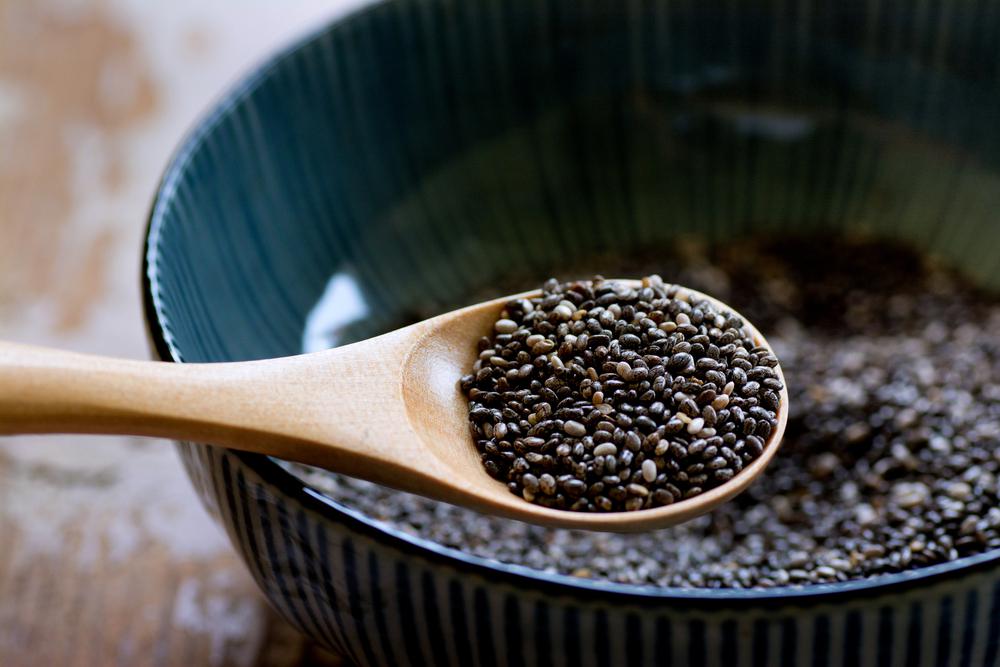 Anatomy:
Anatomy:
Your back (spine) is made up of vertebrae (bones) that make up 5 spinal regions: cervical, thoracic, lumbar, sacrum, and the coccyx. Between each vertebrae sits a shock-absorbing disc that allows movement and provides flexibility.
The purpose of your spine is to protect your spinal cord. Nerves from the spinal cord pass through the intervertebral foramen to the body, allowing messages to be transmitted to and from the brain and the periphery (e.g., your limbs).
The spine is supported by ligaments such as the anterior longitudinal ligament, the posterior longitudinal ligament, and the ligament flavum, and the core muscles such as the transversus abdominis and the multifidus. The unique and complex structure of spine allows humans to move with great freedom, but also requires coordinated interactions between vertebrae, vertebral discs, ligaments, and supporting musculature in order to achieve healthy function.


 The continuous advancement in medical tests has been a major contributing factor to the increased life expectancy of our generation (among with a better and healthier diet and of course fitness). With advancements in medical science, medical abnormalities can now be detected earlier and with greater accuracy. Picking up changes early is vital to ensure that you can treat the condition or changes appropriately. As a result, exercise physiologists are playing an increasing role in the treatment and prevention of many lifestyle diseases.
The continuous advancement in medical tests has been a major contributing factor to the increased life expectancy of our generation (among with a better and healthier diet and of course fitness). With advancements in medical science, medical abnormalities can now be detected earlier and with greater accuracy. Picking up changes early is vital to ensure that you can treat the condition or changes appropriately. As a result, exercise physiologists are playing an increasing role in the treatment and prevention of many lifestyle diseases.























 Whey Protein (20gr) is the fastest digesting protein with its amino acids quickly reaching muscles.
Whey Protein (20gr) is the fastest digesting protein with its amino acids quickly reaching muscles.

 Although it is unlikely to have much effect on the Greek debt crisis, eating Greek yogurt has many benefits for those interested in improving their general health and fitness.
Although it is unlikely to have much effect on the Greek debt crisis, eating Greek yogurt has many benefits for those interested in improving their general health and fitness. Okay so you’re planning on going to the gym for a great workout but want to make it count and don’t know what to eat after a workout, right?
Okay so you’re planning on going to the gym for a great workout but want to make it count and don’t know what to eat after a workout, right? Before starting a personal training program you should take a fitness analysis which tests muscular strength, aerobic fitness, flexibility and body condition - and of course takes in great consideration your health problems if any. The fitness analysis comprises the following.
Before starting a personal training program you should take a fitness analysis which tests muscular strength, aerobic fitness, flexibility and body condition - and of course takes in great consideration your health problems if any. The fitness analysis comprises the following. When comes to diet doesn’t mean starving all the time. If you’re not eating enough your body goes into ‘starvation’ mode and begins to consume muscle, not fat. You need to eat enough to maintain healthy levels of blood glucose to sustain your energy throughout the day. Three meals a day will burn stored fat if you’re also exercising regularly. Regular intake of food creates a ‘thermic’ effect as your body processes the calories. This increases your metabolism.
When comes to diet doesn’t mean starving all the time. If you’re not eating enough your body goes into ‘starvation’ mode and begins to consume muscle, not fat. You need to eat enough to maintain healthy levels of blood glucose to sustain your energy throughout the day. Three meals a day will burn stored fat if you’re also exercising regularly. Regular intake of food creates a ‘thermic’ effect as your body processes the calories. This increases your metabolism. Present day work environments and schedules are not usually very sympathetic or flexible towards those trying to follow a healthy lifestyle or on a diet. Shift work, overtime, deadlines, family responsibilities and commuting can all wreck your fitness regime if you let them. While some compromises may be necessary the secret is to stay in control of the situation as much as possible.
Present day work environments and schedules are not usually very sympathetic or flexible towards those trying to follow a healthy lifestyle or on a diet. Shift work, overtime, deadlines, family responsibilities and commuting can all wreck your fitness regime if you let them. While some compromises may be necessary the secret is to stay in control of the situation as much as possible. Whether it’s the Christmas/New Year period or a summer season break you can put on weight faster than you get a sun burn if you relax your dietary rules while having fun. Christmas and New Year is probably the worst time for dieters as it basically celebrates gluttony, but the rules are the same for any place or time when we may be tempted to over-indulge. So here are a few ways to stay in shape.
Whether it’s the Christmas/New Year period or a summer season break you can put on weight faster than you get a sun burn if you relax your dietary rules while having fun. Christmas and New Year is probably the worst time for dieters as it basically celebrates gluttony, but the rules are the same for any place or time when we may be tempted to over-indulge. So here are a few ways to stay in shape. Eating carbohydrates late at night is, as we all should know, real bad news for our digestive systems and for putting on weight – right?
Eating carbohydrates late at night is, as we all should know, real bad news for our digestive systems and for putting on weight – right? Fat never goes out of fashion at least not the numerous approaches to getting rid of it. How it gets there is generally well documented usually under the headings of an unbalanced diet and lifestyle. Of course, getting rid of just about anything is always going to be harder than if we’d simply avoided it in the first place, but here we have a recent study that looks at making a cure for too much fat from one of the main culprits: namely dairy products.
Fat never goes out of fashion at least not the numerous approaches to getting rid of it. How it gets there is generally well documented usually under the headings of an unbalanced diet and lifestyle. Of course, getting rid of just about anything is always going to be harder than if we’d simply avoided it in the first place, but here we have a recent study that looks at making a cure for too much fat from one of the main culprits: namely dairy products. In the last decades many different theories about salt or sodium have come to light.
In the last decades many different theories about salt or sodium have come to light. Anatomy:
Anatomy: Everyone needs a certain amount of protein in their diet and anyone involved in fitness training and body building will logically need more in a daily basis. One way to get an energy boost after working out while avoiding the dangers of high fat sources of protein, such as fatty meats, is by shaking up a shake based on protein powder alternatives or buy one of the hundreds brands in the market.
Everyone needs a certain amount of protein in their diet and anyone involved in fitness training and body building will logically need more in a daily basis. One way to get an energy boost after working out while avoiding the dangers of high fat sources of protein, such as fatty meats, is by shaking up a shake based on protein powder alternatives or buy one of the hundreds brands in the market. While all vegetables are basically good for your health some are better than others. Cruciferous veggies are special due to their chemical composition which includes sulphurous compounds which give then their pungent flavour. When broken down by either chewing or chopping these sulphurous compounds are converted into isothiocyanates (ITCs) which can prevent and help fight cancer as well as boosting the immune system. Cruciferous veggies also contain antiviral/bacterial agents that can help keep you disease free.
While all vegetables are basically good for your health some are better than others. Cruciferous veggies are special due to their chemical composition which includes sulphurous compounds which give then their pungent flavour. When broken down by either chewing or chopping these sulphurous compounds are converted into isothiocyanates (ITCs) which can prevent and help fight cancer as well as boosting the immune system. Cruciferous veggies also contain antiviral/bacterial agents that can help keep you disease free. Summer is next to our door, and clean eating is a must, if you want to have a healthy body. Clean eating basically means to avoid pre-packaged and processed foods and return to basics – fresh fruits and vegetables, whole grains *(preferably organic) and lean protein from fish.
Summer is next to our door, and clean eating is a must, if you want to have a healthy body. Clean eating basically means to avoid pre-packaged and processed foods and return to basics – fresh fruits and vegetables, whole grains *(preferably organic) and lean protein from fish. So, while it may not look or feel like spring outside, it’s spring! The end of Spring when Summer should be teasing us. Bringing all the fun things you’d associate – holiday weekends, barbecues, weddings, evenings drinking outside….. all of which add up to bad news for your clean eating and training regime. We are all human though and the odd blow out is not going to have hugely detrimental effects to your overall goal if it is exactly that – occasional. If you eat cleanly and exercise regularly, nothing wrong with treating yourself every now and again. What is wrong though is allowing what should be a cheat “meal” to become a full –on blow out. So you have a glass of wine and a dessert at lunchtime…. This does not give you licence to finish the rest of the bottle over the course of the afternoon and then have a takeaway pizza for dinner and raid the biscuit tin for a midnight snack. Do not let treats become pig outs!
So, while it may not look or feel like spring outside, it’s spring! The end of Spring when Summer should be teasing us. Bringing all the fun things you’d associate – holiday weekends, barbecues, weddings, evenings drinking outside….. all of which add up to bad news for your clean eating and training regime. We are all human though and the odd blow out is not going to have hugely detrimental effects to your overall goal if it is exactly that – occasional. If you eat cleanly and exercise regularly, nothing wrong with treating yourself every now and again. What is wrong though is allowing what should be a cheat “meal” to become a full –on blow out. So you have a glass of wine and a dessert at lunchtime…. This does not give you licence to finish the rest of the bottle over the course of the afternoon and then have a takeaway pizza for dinner and raid the biscuit tin for a midnight snack. Do not let treats become pig outs! If your serious about developing your physical potential, whether by competitive running, pumping iron in the gym, or even just doing yoga at home you’ll know there’s a whole lot more than seven potential ways in which your body can not only protest but cause some serious grief.
If your serious about developing your physical potential, whether by competitive running, pumping iron in the gym, or even just doing yoga at home you’ll know there’s a whole lot more than seven potential ways in which your body can not only protest but cause some serious grief. Stress is higher and higher with the pressures of modern life. Stress increases cortisol levels which have a negative impact on muscle tissue as well as increasing the risk of stroke, heart disease and depression.
Stress is higher and higher with the pressures of modern life. Stress increases cortisol levels which have a negative impact on muscle tissue as well as increasing the risk of stroke, heart disease and depression.












